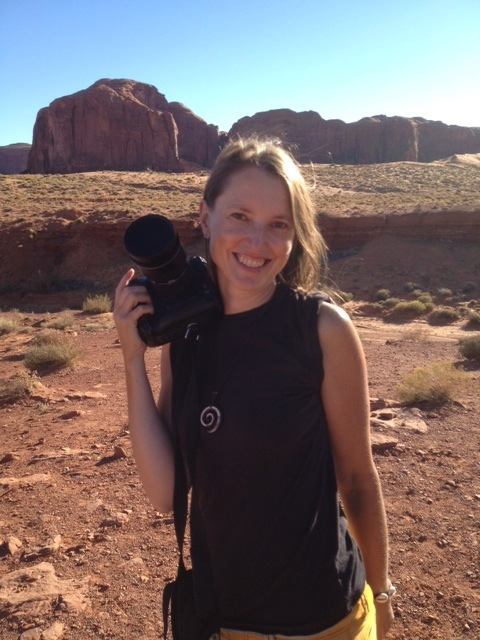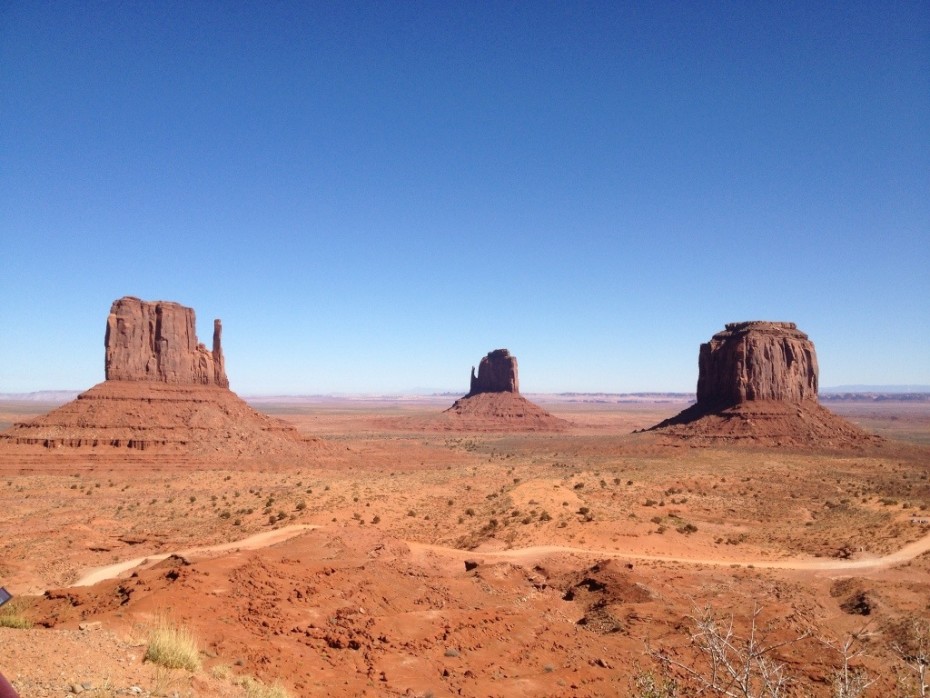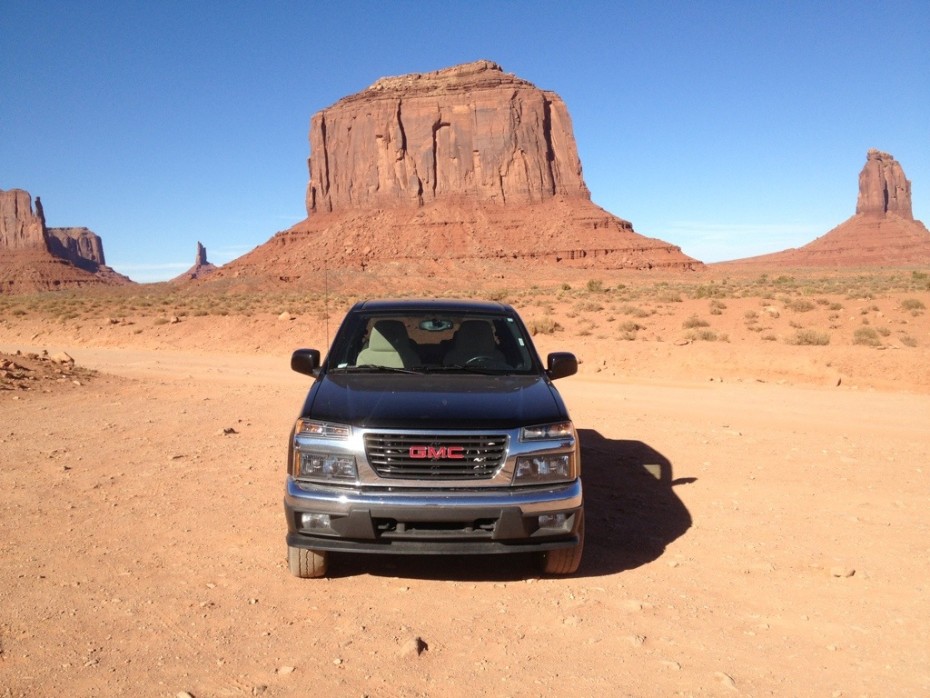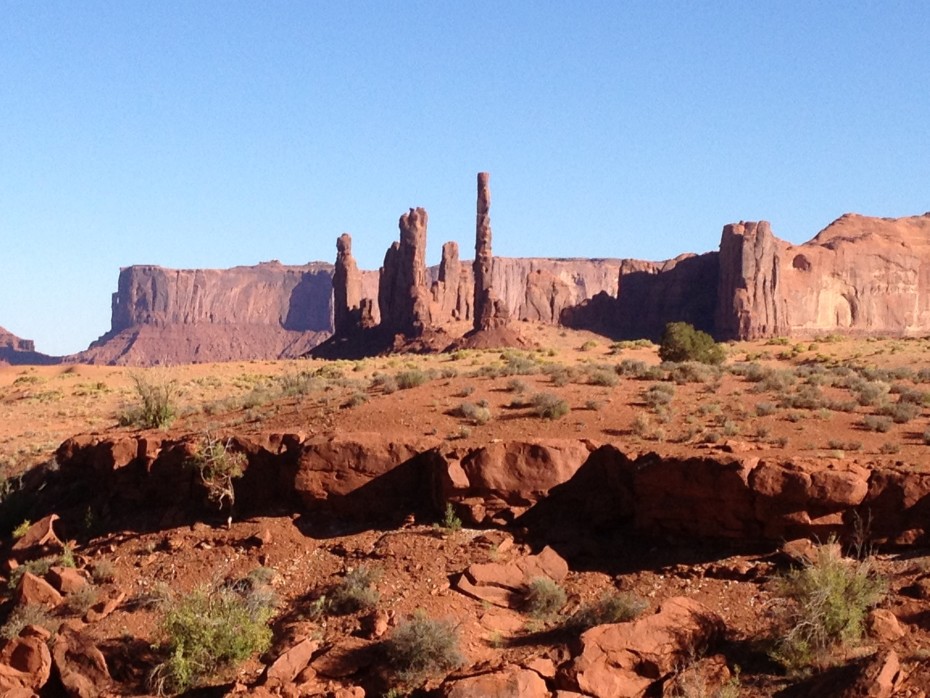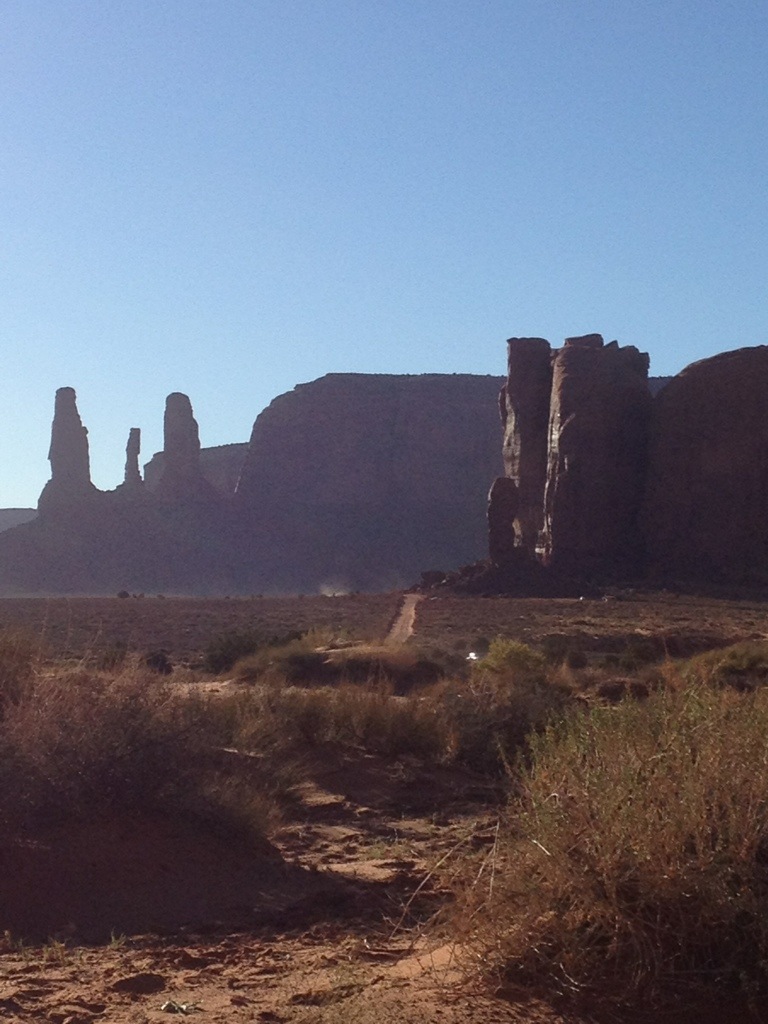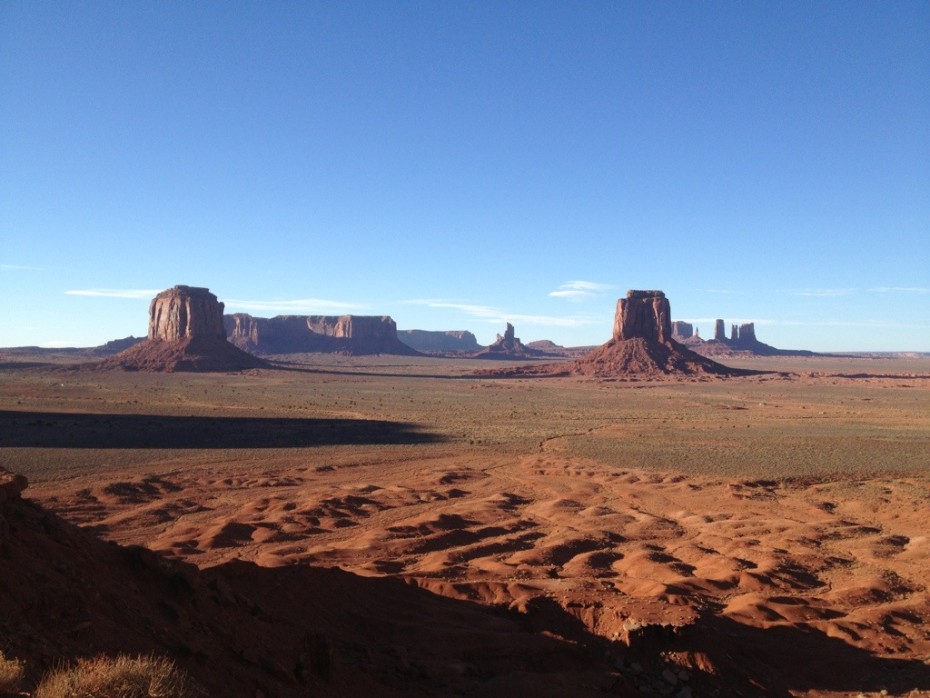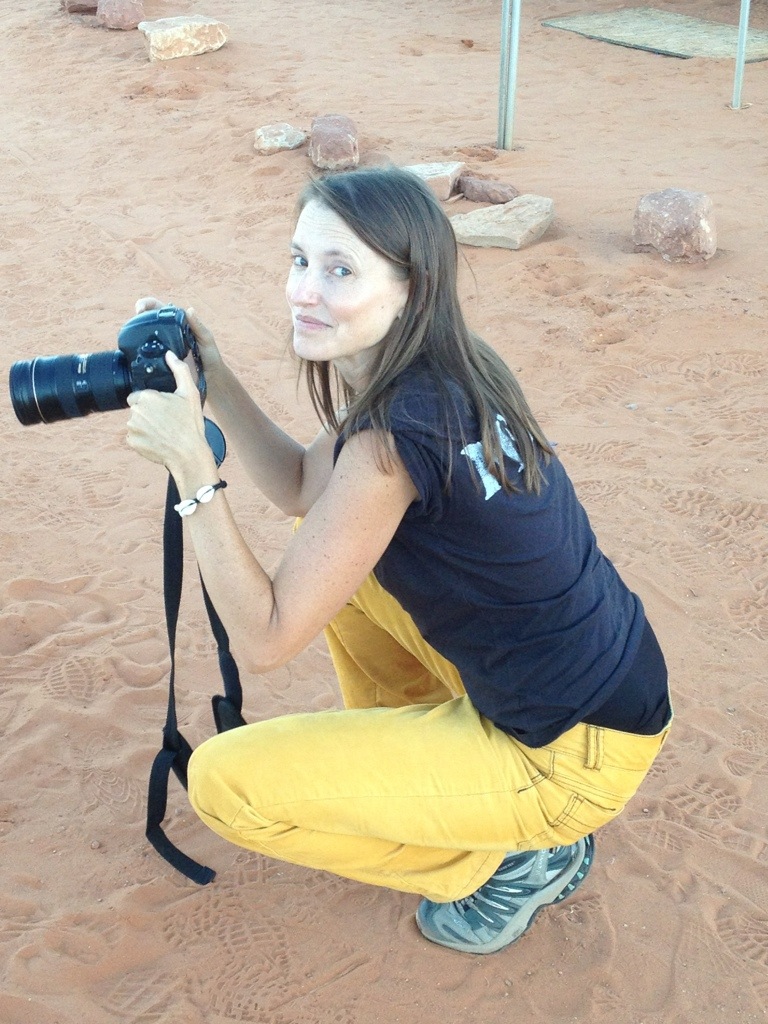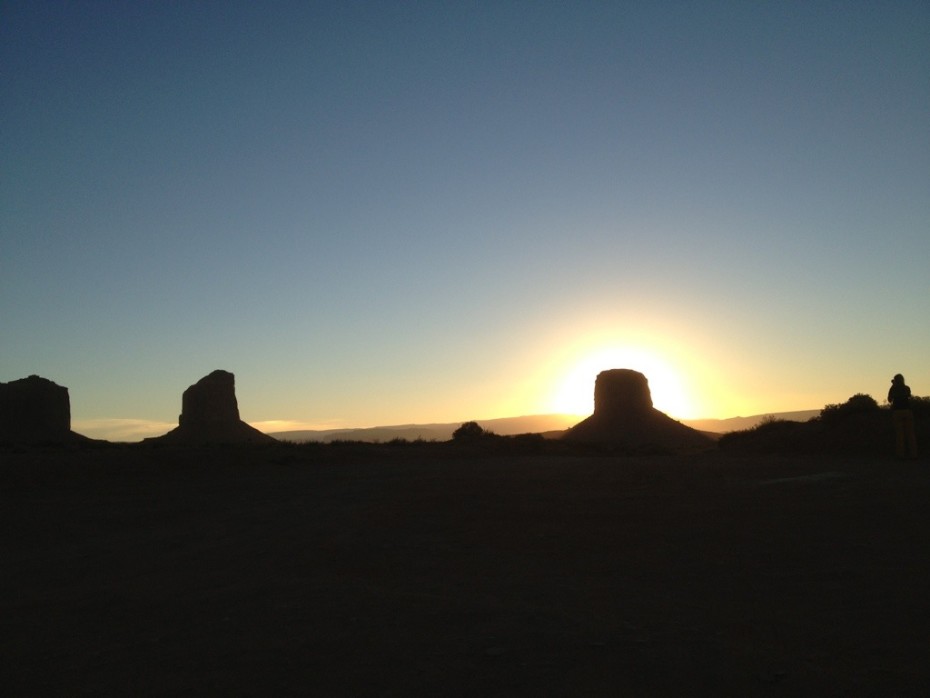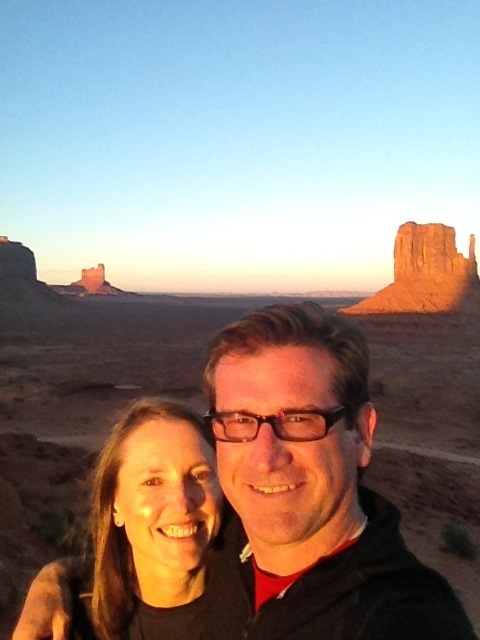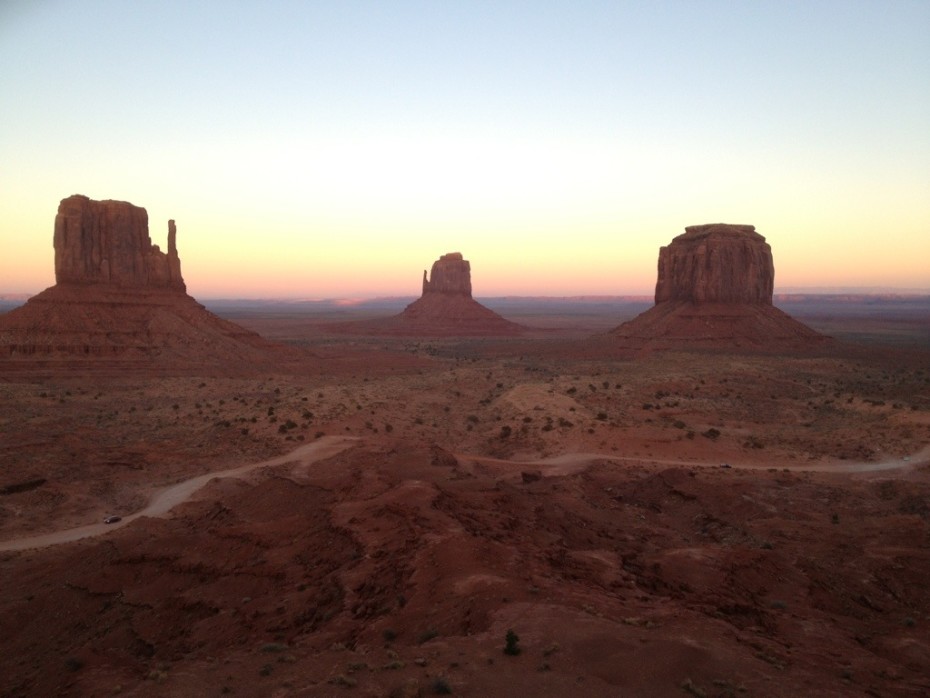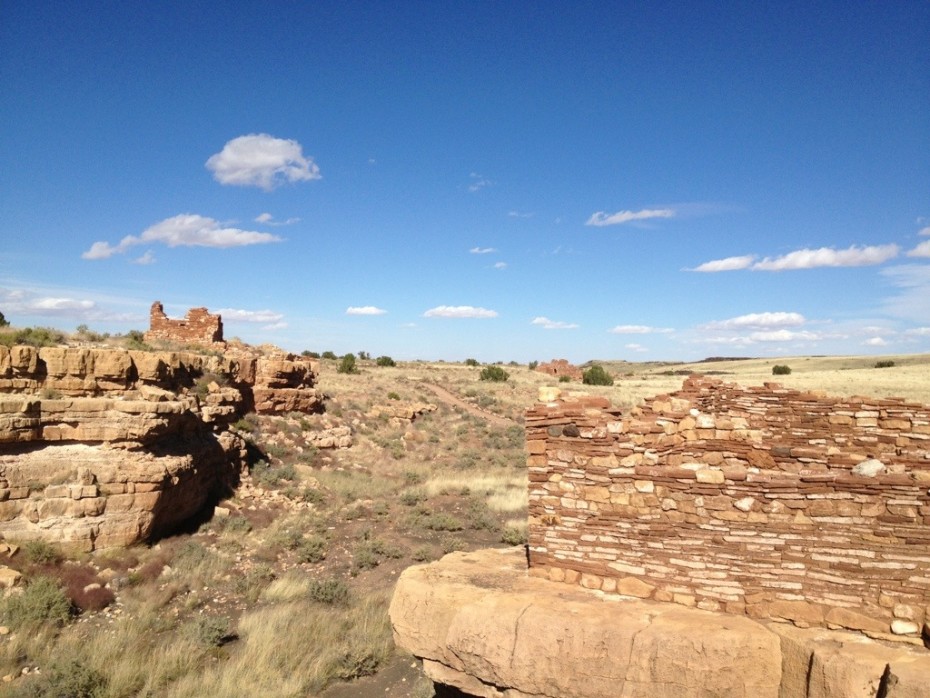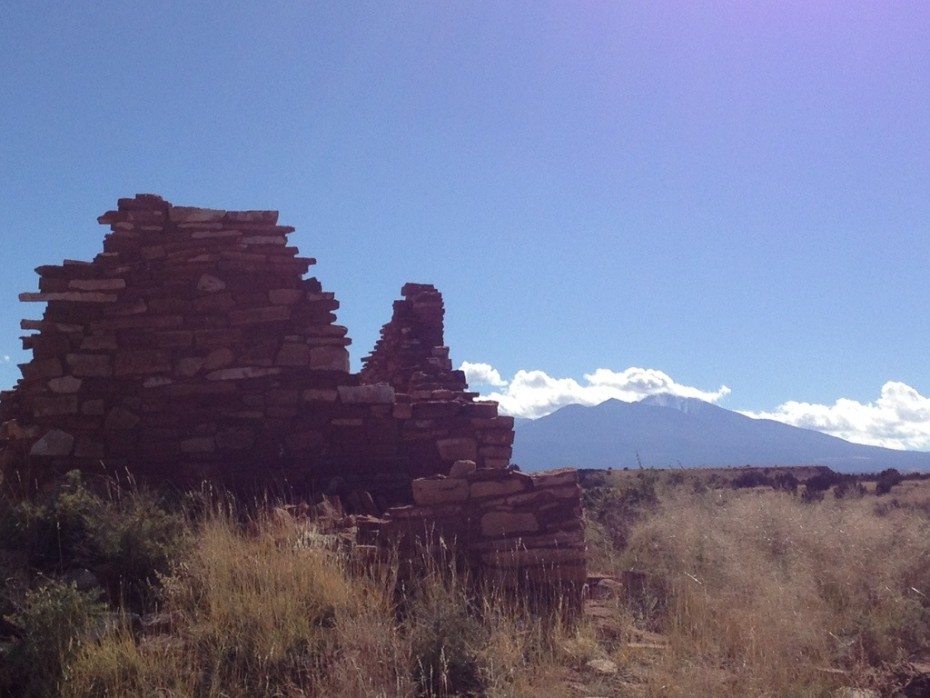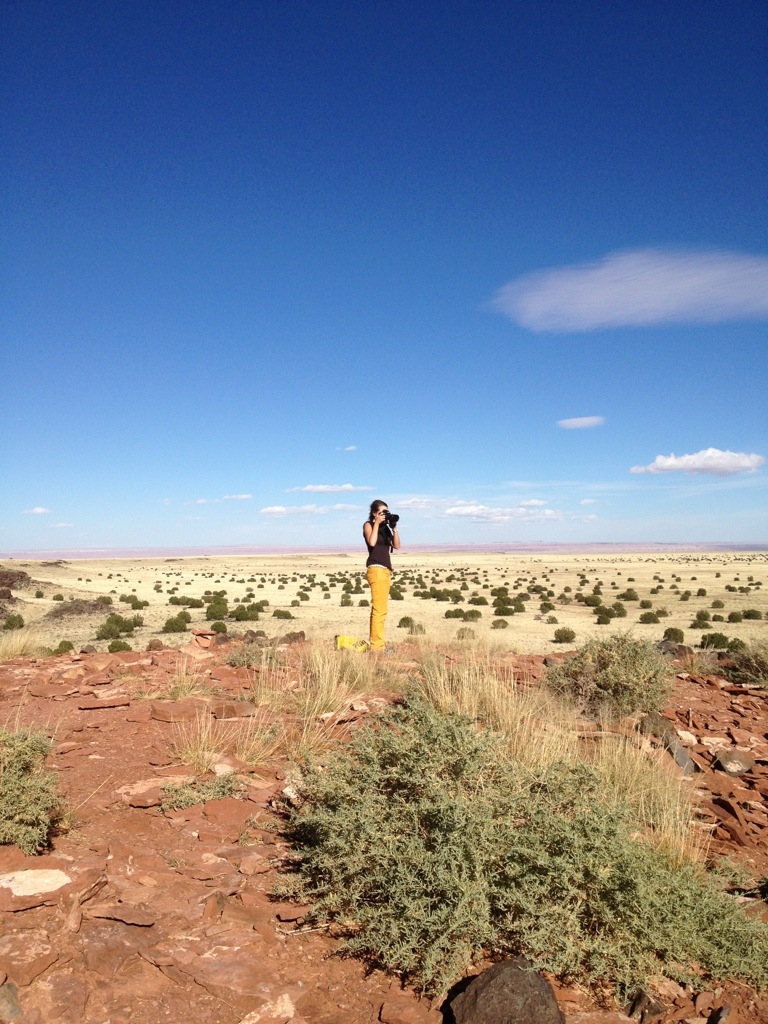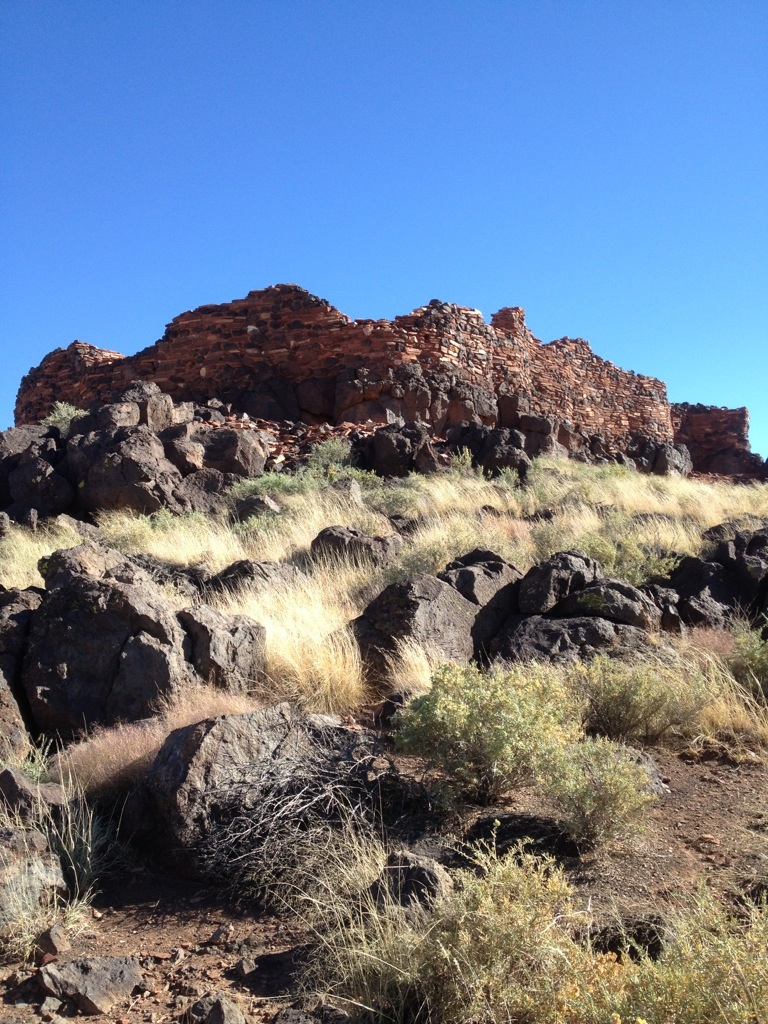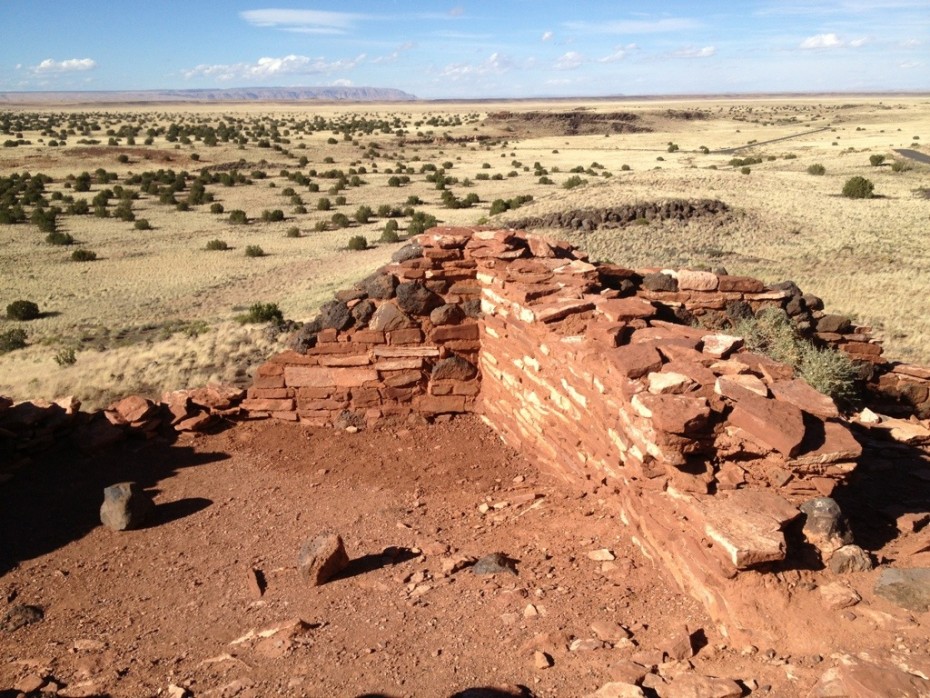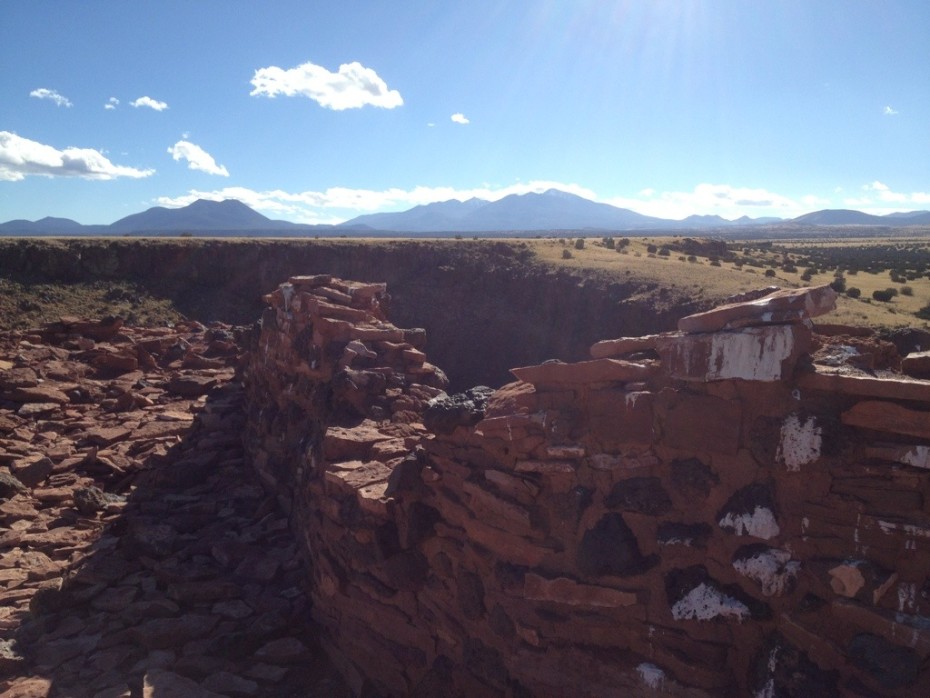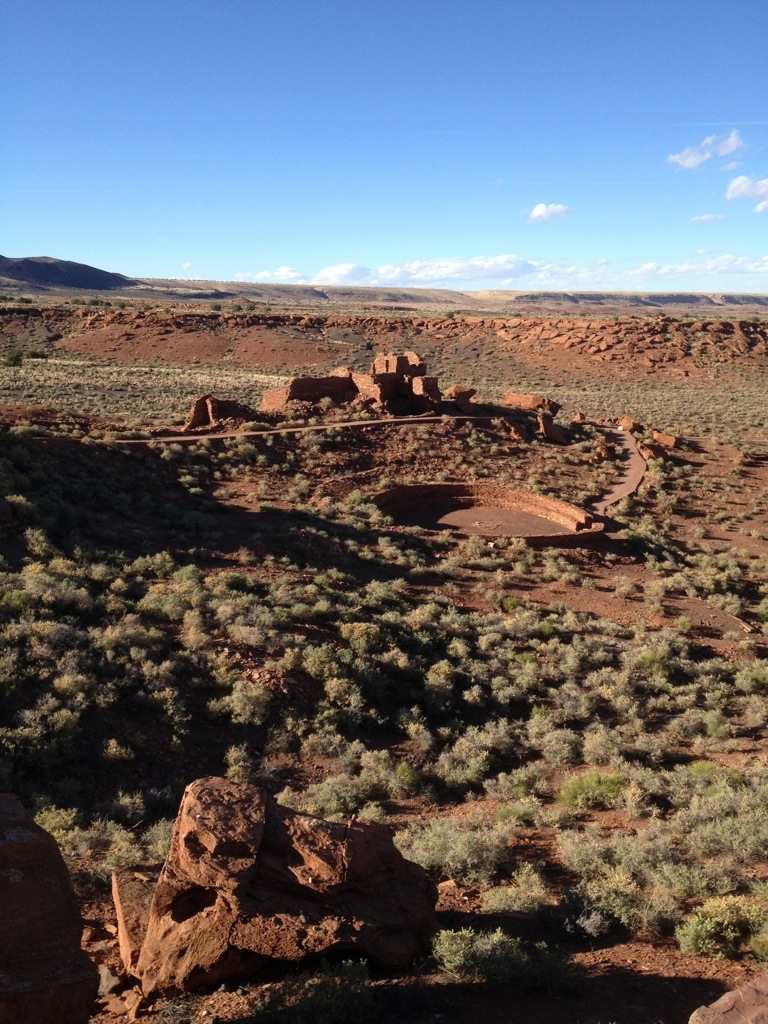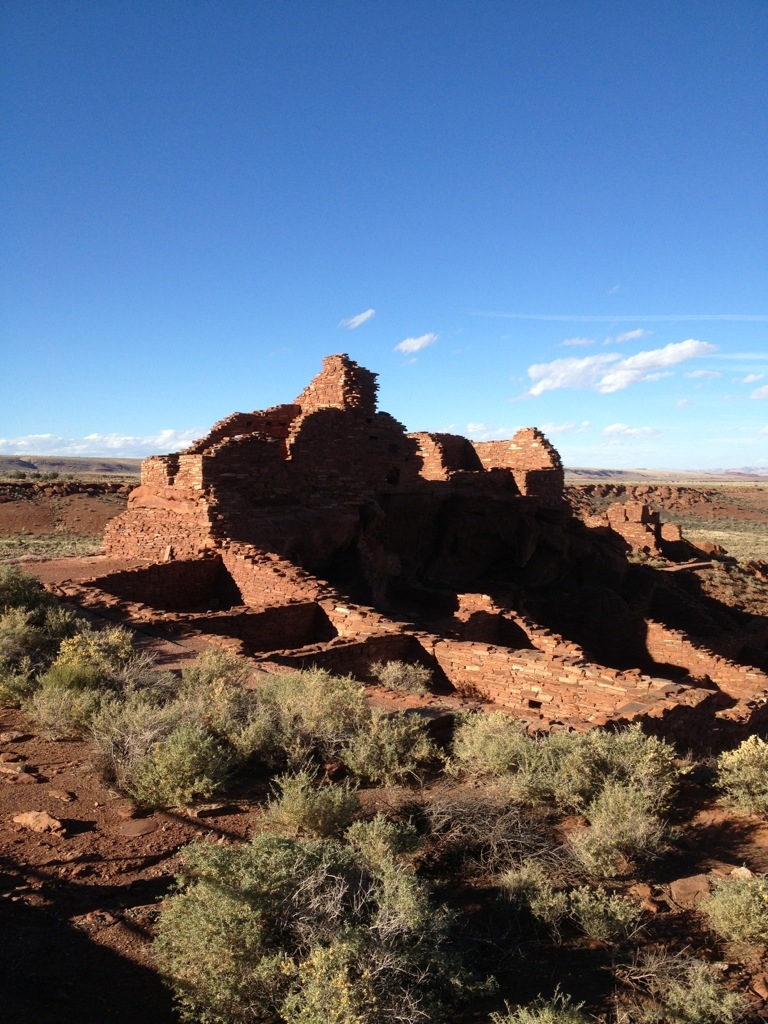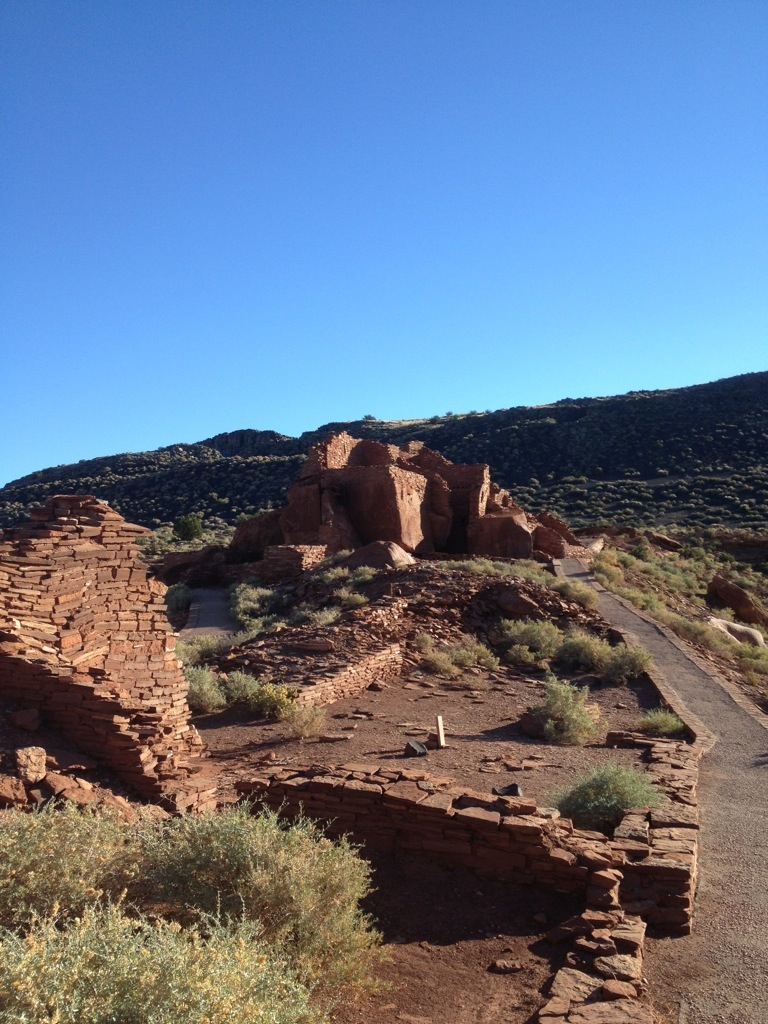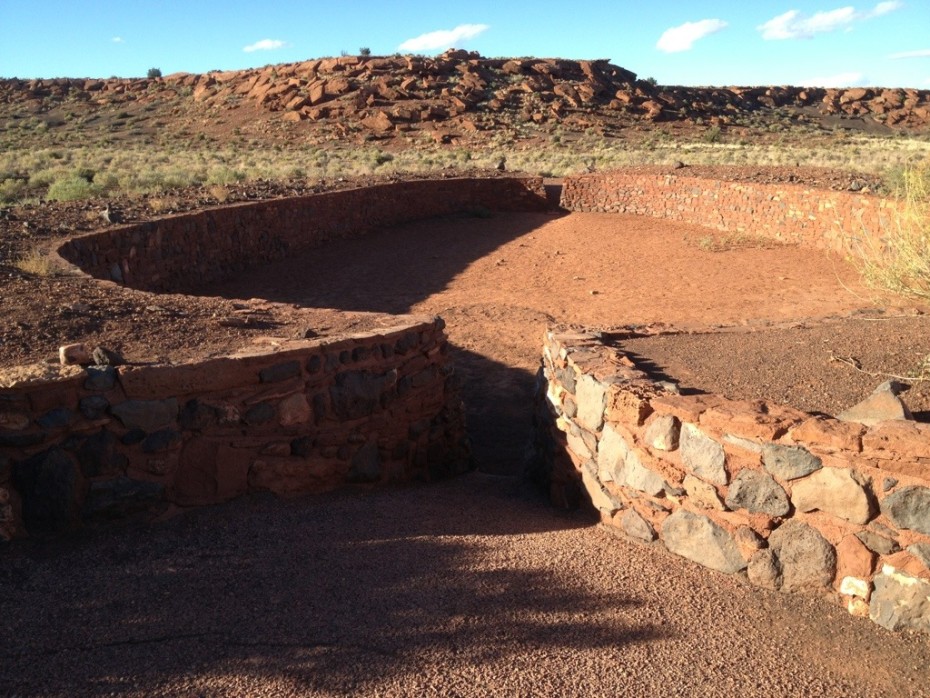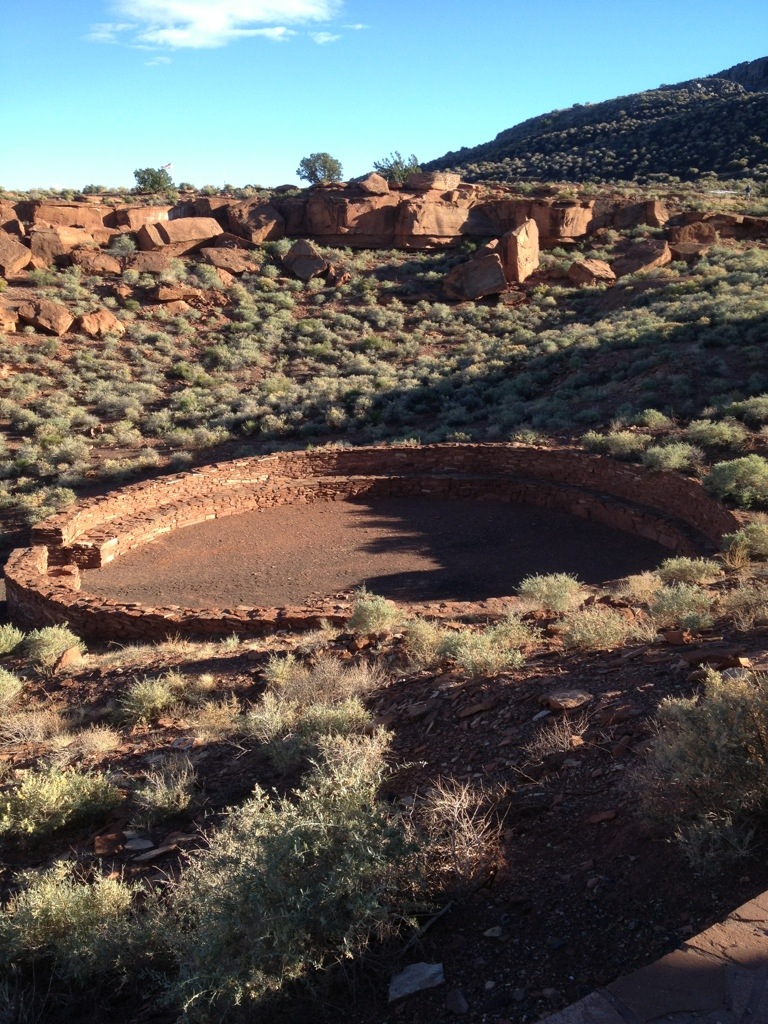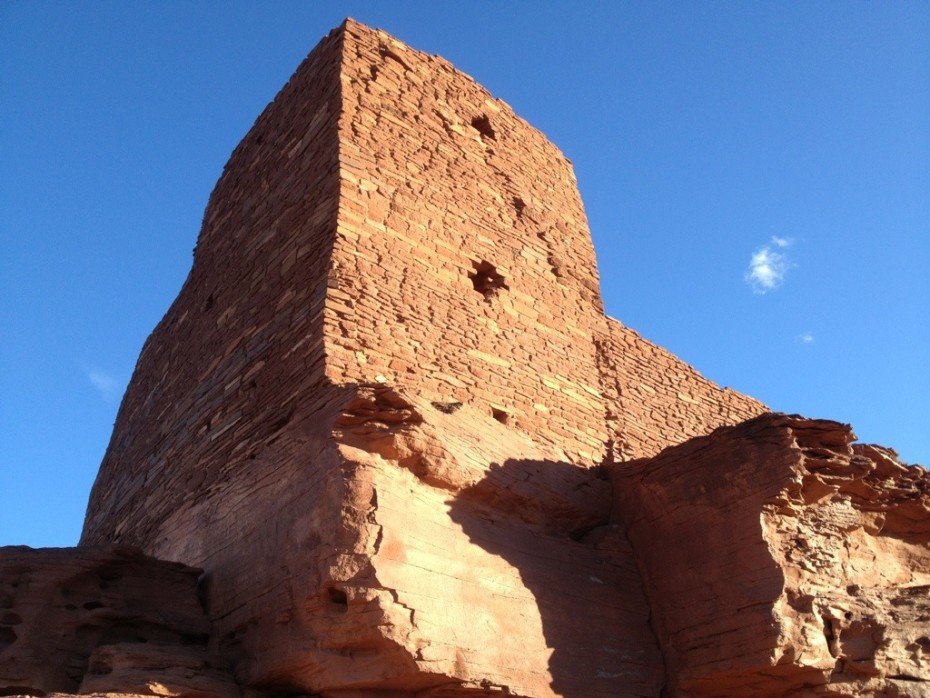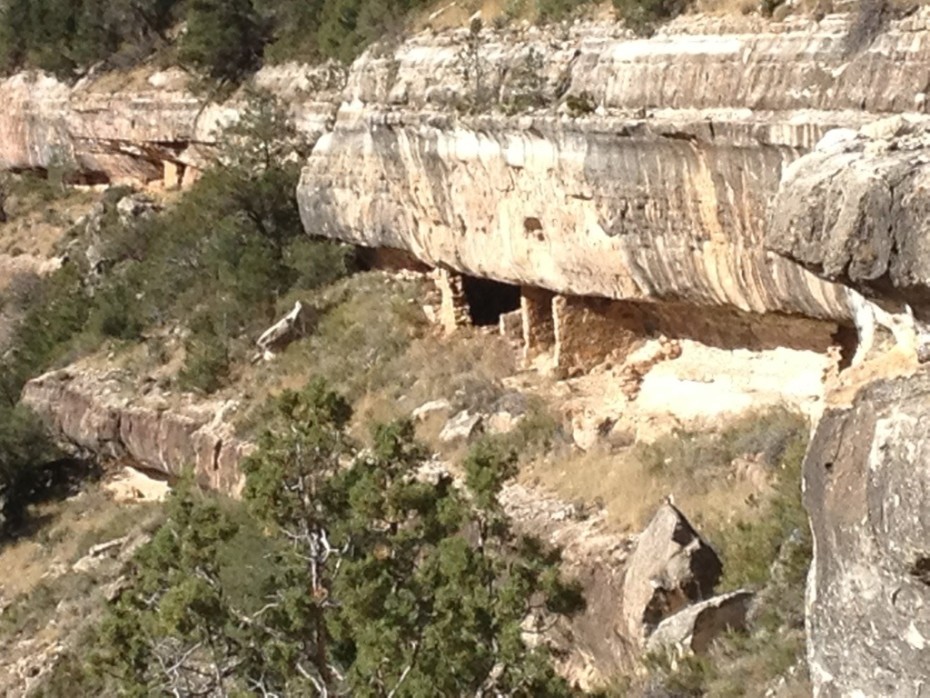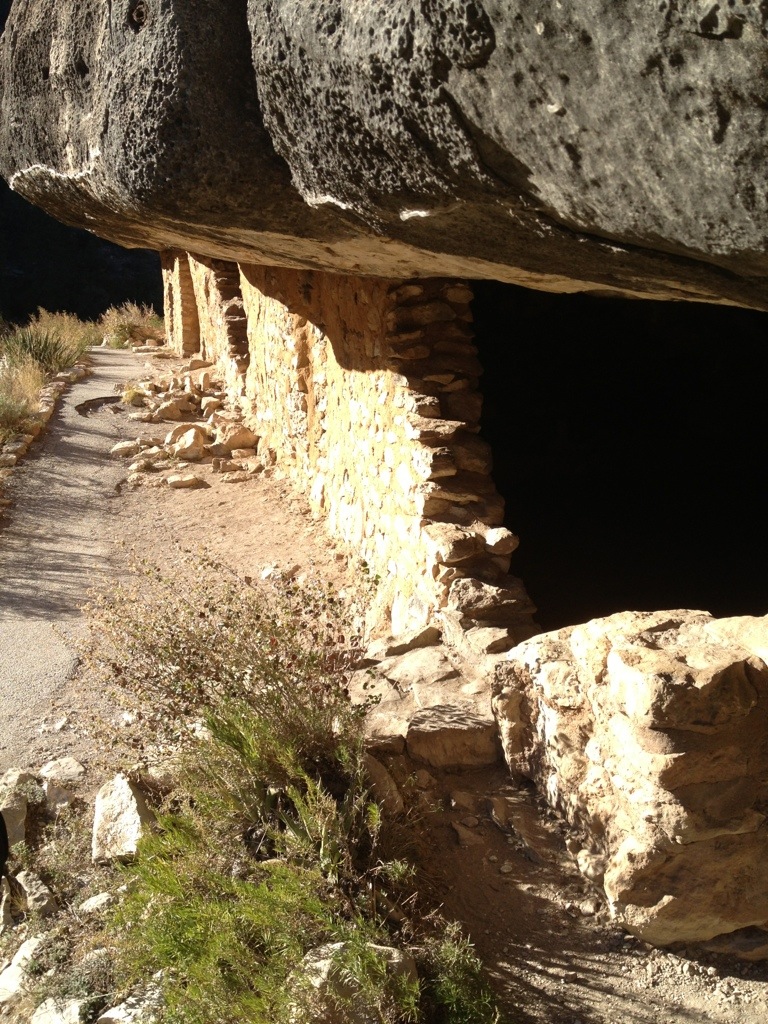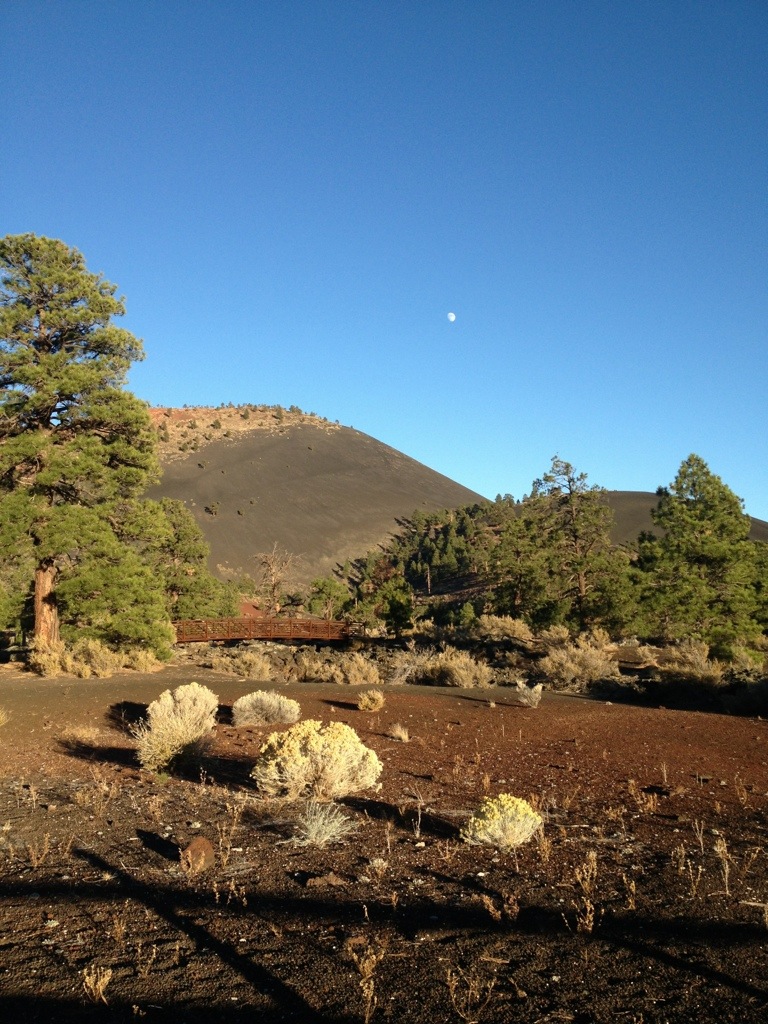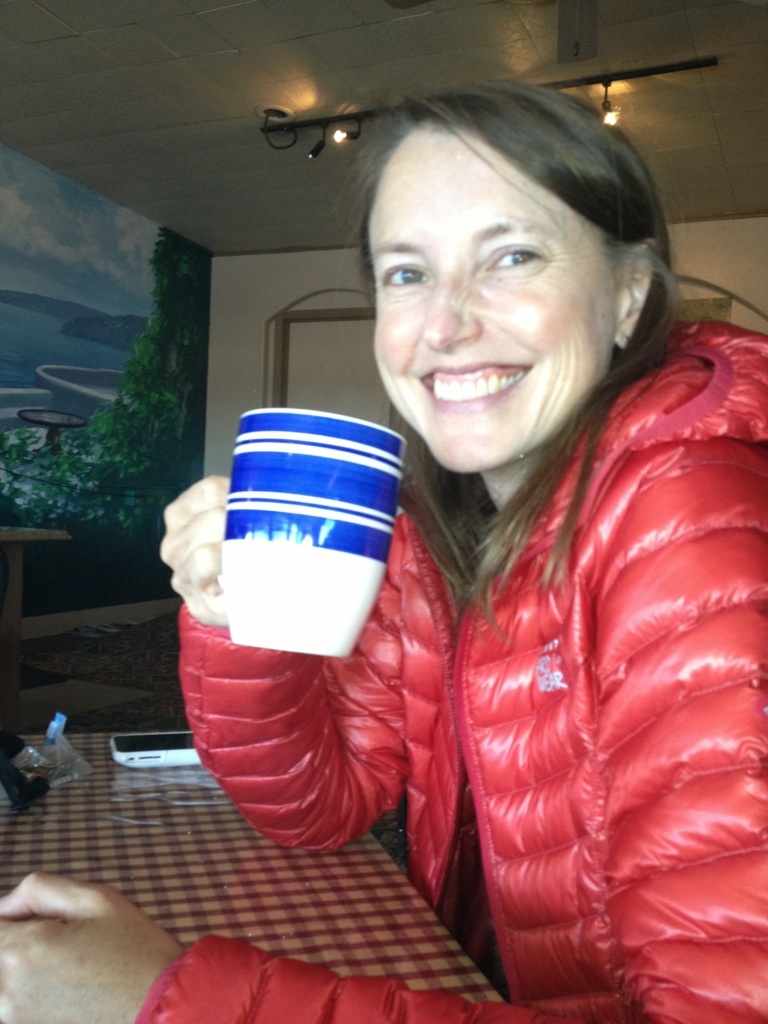 We decided to take the back, unsignposted and largely missing-from-the-map dirt track from the Hopi Mesas to Kayenta, the cheap place to stay if you’re visiting Monument Valley, via Pinon (probably originally Piñón or “pine nut” in Spanish), crossing a small part of the Navajo Nation which few other whiteys visit.
We decided to take the back, unsignposted and largely missing-from-the-map dirt track from the Hopi Mesas to Kayenta, the cheap place to stay if you’re visiting Monument Valley, via Pinon (probably originally Piñón or “pine nut” in Spanish), crossing a small part of the Navajo Nation which few other whiteys visit.
The track produced a lady with a pick-up full of coal from the local mine and a flat tyre, another pick-up sprawled stationary across the track with the teenage driver passed out at the wheel and kamikaze drivers hurtling straight towards us, swerving at the last split second into a cloud of dust. Half-way point Pinon was all about the gas station – literally. The whole town seemed to be milling around the convenience store (probably the only shop in town) and its fast-food restaurant (definitely the only eatery for miles).
Kayenta was nothing to write home about, so I won’t, but Monument Valley way exceeded our expectations. Yes, they are just big rocks sticking out of the ground in fanciful shapes, but they jut straight up out of flat land, sheer and sky-high, as if trying to take you by surprise, and they glow clay red against a deepening purple sky at sunset. A true natural spectacle enjoyed even more by the paramotor pilots who were threading their wings between the rock fingers. That definitely made me want to start flying again, and if only I’d had my tripod for some night photography against the light pollution-free sky… Next time.
Next stop, Tuba City: a town split by the highway between the Navajo and Hopi reservations. The two tribes are arch-enemies and the Hopi reservation is completely surrounded by the Navajo Nation – an uncomfortable arrangement neither tribe chose. However, they do come together to celebrate their traditions at the annual event we’d headed there to see.
The children dancing in feathered headgear and face paint, adults in suede, leather, turquoise and embroidered outfits, and Hopis and Navajo making biting jokes about each other over the loudspeaker, were well worth quite a few hours in the sun, as were the Christmas-helpful native craft stands. As elsewhere on tribal land and, in this case, despite the lack of signs, we were strongly discouraged from taking photos, with locals saying I’d have my camera or memory cards confiscated. Is this really the US? No, I guess not.
Glenn’s lowlight of the day: a T-shirt boasting 3 photos of Navajo chieftains which declared “All my heroes have killed cowboys”. We only saw two other white people at this massive event. Maybe the T-shirt scared them away.
From Tuba City, we sped off to Wupatki National Monument; a series of stone villages and dwellings, from a citadel wound around the top of a hill to a 100-room, 3-storey village complete with a plaza, a Central American-style ball court and a geological blowhole blasting out air, which became fashionable around 1040-1100 AD, when the eruption of nearby Sunset Crater volcano fertilised the soil with ash and helped it to retain water. Should my next property investment be next to an active volcano???
A short drive on, we reached Sunset Crater just in time and for the second time on this trip, to see the sun set before you could say “camera”. Nonetheless, the eruption is so recent that the lava flows and cinder cones haven’t had much of a chance to erode, making for spectacular and unexpected scenery in a palette of purples, yellows and blacks.
From Sunset Crater, it’s just a short drive to Flagstaff, where we holed up in a cheap motel with prime highway and fumes views, to evaluate the state of Glenn’s leg and our chances of getting back on the trail, while indulging in two movies at the cinema (Argo and Here Comes the Boom; the first serious and thrilling and the second silly and hilarious).
We decided to go for it, stocked up on trail food and water and made a last road trip before returning the hire pick-up, this time to Walnut Canyon. There were no walnuts to be seen, but plenty of 900+ year-old dwellings sandwiched in cliff cracks, some originating from the Sinagua tribe (named by the Spaniards for their ability to live “sin agua”; without water), and a 1.5-mile trail with over 100 steps, where we put Glenn’s leg through a final strength test before heading back out into the wilderness…, but not before a third and failed attempt at turning up at Sunset Crater before sunset. Its name is well-deserved.

